It would seem that the question is quite simple - both the methods have been worked out for a long time, and the choice of thermal insulation products is significant. But it’s not about any building, but about a wooden house. There are a number of nuances regarding its insulation that cannot be neglected.
It's all about some of the features of such a building material as wood. First of all, it is its susceptibility to decay, the ability to "breathe" and retain heat well. The last two properties make it possible to maintain comfortable indoor conditions, as a rule, without significant additional costs. For example, for the purchase (and professional installation) of climatic equipment, due to the increased consumption of en / resources (including fuel for the boiler). At least, the indicated devices are not used as intensively in wooden houses as in buildings made of brick or aerated concrete. So, let's take a closer look at how and what is the best way to insulate a wooden house.
To make the technology of work clearer, it should be explained why external insulation for a wooden house is the only right solution. This method of reducing heat loss is the main one for any buildings, as it has a number of advantages. For example, it does not reduce the usable area. This is one of the disadvantages of arranging this protective layer from the inside. But for a log house something else is more relevant.
It's all about the so-called "dew point". External installation of the insulation takes it outside the perimeter of the house, and condensation forms in the ventilated space. Therefore, in cold weather, the tree does not freeze, and in warm weather, the decay process does not begin. If the insulation is laid on the walls of the premises, then the "point" shifts inward. As a result, the logs (timber) remain unprotected, and the condensate settles in the thermal insulation material, which initiates the development of mold and mildew not only in it, but also in the rooms.
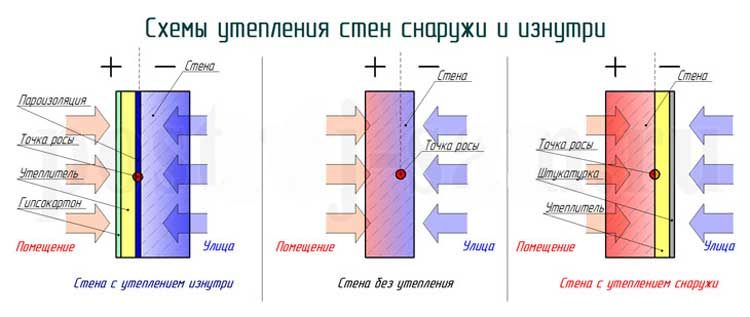
How to insulate a wooden house
If you delve into the details, then the choice of materials is not that great.
Expanded polystyrene plates
They differ not only in the correct geometry, but also in "rigidity". Therefore, in order to fix them, the base must be carefully aligned. For a timber it is still acceptable, especially if the walls were erected by professionals. But what about the logs? In addition, the foams are not only moisture-proof, but also air-tight. Therefore, the main attraction of a timber house - microclimate regulation - will be completely leveled.

Sprayable compounds
Typically polyurethane. There are even more disadvantages, in addition, you will need special equipment. But the firms providing this service (for PU insulation) are silent about another rather significant disadvantage - the low maintainability of the layer. After all, it sticks to the surface on which it is applied. If you literally "pick it off" from the brick or concrete goods still work out, then what about the tree? After all, it is quite malleable to mechanical stress, and damage to the logs or timber in this case cannot be avoided.
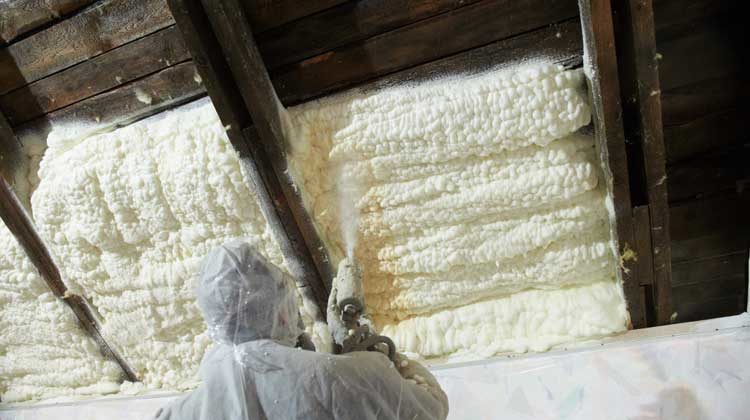
There are other types of insulation for wooden buildings, which the authors of some articles advise to use. But all the listed materials (chipboard, flax fiber, etc.), taking into account the specifics of the log house and in terms of durability, hardly deserve attention.
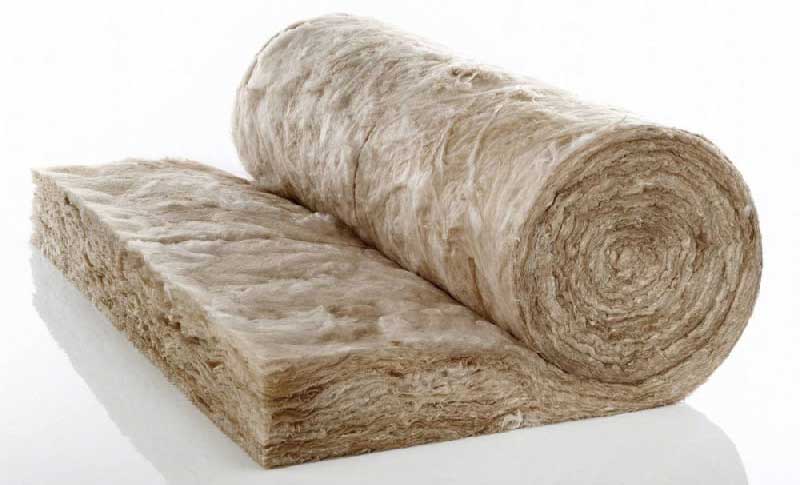
Only mineral wool should be used to insulate wood buildings. Excellent vapor permeability, elasticity, low weight - in fact, such thermal insulation fully meets all the main criteria for a wooden house.
Warming the house outside - how to do it

Surface cleaning
This is where any repair or finishing work begins. For a wooden house, an initial inspection is especially important. It is necessary to identify all foci of damage to wood, to determine their nature, methods and means for eliminating defects. This is a separate topic, and.
Treatment with special / drugs
For a wooden house, both are equally relevant - fire retardants and antiseptics. Features of their use and recipe are indicated on the package. It is clear that it is advisable to do this when the weather is positive and the sky is clear.
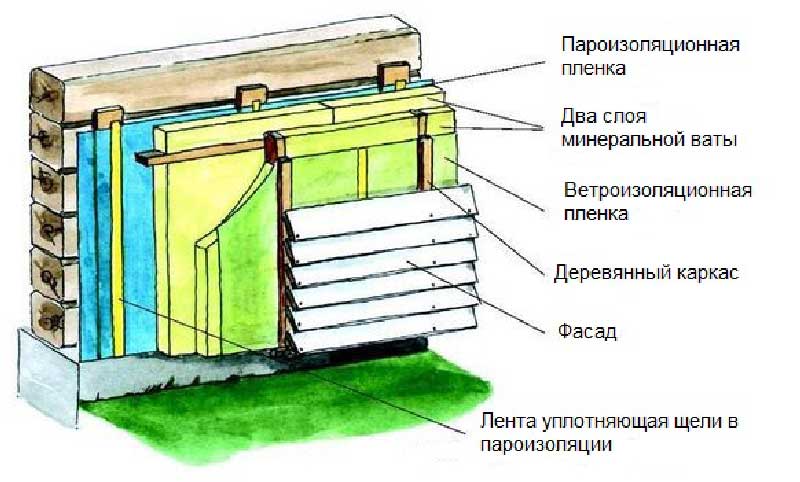
All types of wood are porous. Although more often they talk about the hardness or density of lumber. Based on this, the appropriate formulations should be selected. Their list is quite large, and the specificity of the application can be very different. The best ones are those that penetrate deep enough into the structure of the material and at the same time do not "close" the pores. Otherwise, the tree will not be able to "breathe".
Installation of a vapor barrier layer
Its main purpose is to ensure the ability of wood to self-regulate the microclimate and at the same time to protect the material from direct contact with moisture. There are many types of films and membranes on sale. If the first option is chosen, then it is necessary to take into account that all samples differ in their performance, therefore, in the specifics of use. The film is cheaper, but the usual polyethylene modification cannot be used for vapor barrier. It is hermetically sealed and does not allow air to pass through with water. It is worth considering when choosing products.
Fastening on the outside of a wooden house is quite simple - using a construction stapler (staples). It is only necessary to take into account that the strips must be mounted with a small "overlap", and the joints must be closed with adhesive tape (tape).
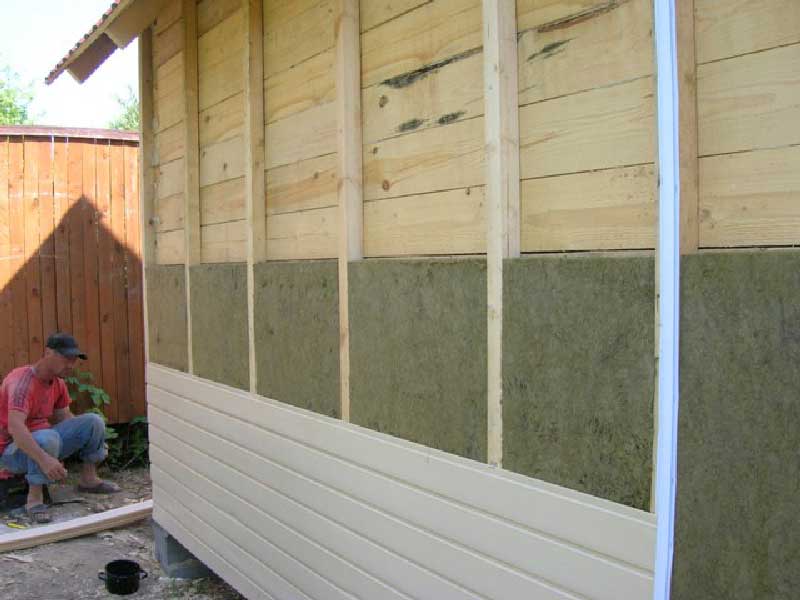
Structural frame construction
It is also called a crate. What is its peculiarity in relation to a wooden house? The coefficients of thermal expansion of the materials that are bonded should be taken into account. Metal slats in installation are much more convenient, but since the house is made of wood, it is impractical to use them. Only wooden blocks of the appropriate length and section.
The dimensions of the seats (lathing cells), as well as its design, are selected based on the geometry and performance of the insulation. Mineral wool is sold in slabs or rolls, so it's easy to draw up a sample layout.
Another nuance concerns fasteners. Self-tapping screws or screws should not be used for the fixing elements of the battens. They "tightly" grab the supporting structure, and this should not be. A wooden house "plays" somewhat under the influence of external factors (a feature of the material), therefore, the lathing to it is fastened only with nails.
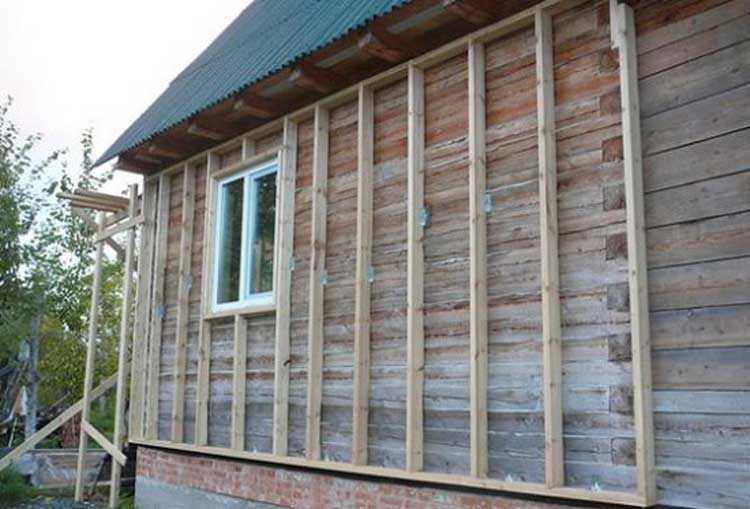
What to consider
The reliable position of the insulation is ensured by the fact that in the process of laying in place the samples are slightly compressed. Then, due to their elasticity, they straighten a little, which determines their reliable "coupling" with the rails of the supporting frame. When calculating its parameters, you need to choose the size of the cells so that they are slightly smaller than the thermal insulation products. Then you will not need any additional fastening on the outside of the house.
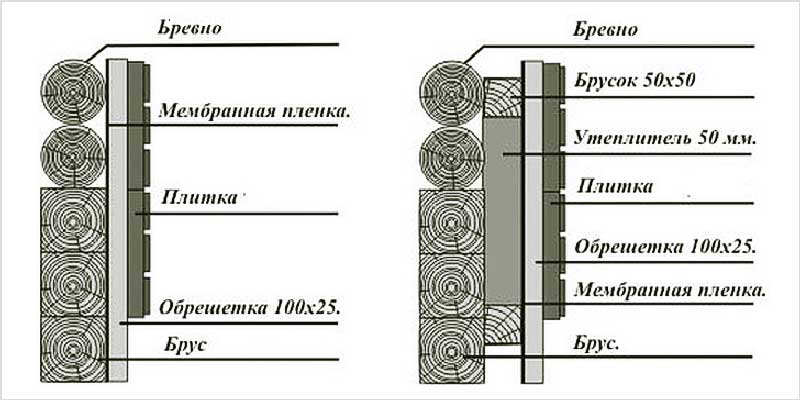
Laying insulation material
There is nothing complicated in this, especially if the scheme is drawn up correctly. Minvats are well cut with an ordinary knife, they bend, so no problems will arise.
Peculiarities:
- On problem areas of the walls (complex configuration, slope, etc.), it is worth additionally fixing the thermal insulation with special nails - anchor.
- The slots in the places where the insulation adjoins to the frame slats are sealed with the same construction tape.
- Installation of thermal insulation is carried out in the direction from bottom to top, in rows.
- In regions with frosty winters, the insulation (depending on the thickness of the samples) can be stacked in 2 layers. In this case, the slabs for the second are cut so that after installation their joints in the rows do not coincide. That is, a mount with a slight offset.



